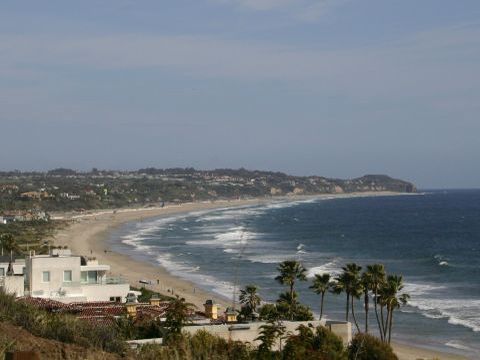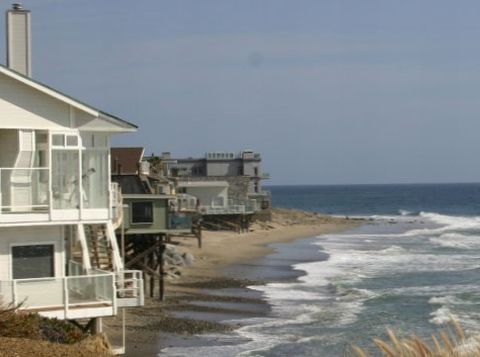We wish you a very Happy Easter, Happy Passover, and just a happy, nice, beautiful spring Day!
Right on cue, two of my Easter Lilies opened up today! They are soooo beautiful! Have a great day!

We wish you a very Happy Easter, Happy Passover, and just a happy, nice, beautiful spring Day!
Right on cue, two of my Easter Lilies opened up today! They are soooo beautiful! Have a great day!

Usually, I consider on-line tests a waste of time and effort, and that may be true in most cases, but I was intrigued by the results from a poll I saw on another blog last week. So, I took the political preferences on-line test at OkCupid! Politics Test and the results are in: I am socially and economically conservative and am best described as a strong Republican.
Hmmmm . . . I sort of knew that already. What I discovered, however is where I fall with respect to the politics of some famous people:

I consider myself in good company up there between Presidents Reagan and Bush.
John Kerry should be depicted down in the corner with Mahatma Ghandi; Kerry is certainly not a centrist.
There are miles and miles of scenic beaches in western Los Angeles County. During our recent excursion to the Ronald Reagan Presidential Library, we took the time to return via the shoreline. I snapped these pictures as we passed beautiful beaches and homes.
This is a shot of Zuma Beach with Point Dume in the distance.

These beach front homes are just west of Malibu – I wonder how much these guys have to pay per year for tsunami insurance? Can one even get tsunami insurance?

Do not forget to set your clocks ahead this weekend.
Why are we doing this?
 In the US, DST was used during the first and second world wars to (ostensibly) conserve energy; during WWII it was referred to as “war time.” DST has value in temperate zones where the daylight to darkness ratio changes considerably from summer to winter. This allows for the human sleep/awake cycle to generally align better with darkness/daylight. The intended effect is less energy consumption. There are some critical arguments against this, however.
In the US, DST was used during the first and second world wars to (ostensibly) conserve energy; during WWII it was referred to as “war time.” DST has value in temperate zones where the daylight to darkness ratio changes considerably from summer to winter. This allows for the human sleep/awake cycle to generally align better with darkness/daylight. The intended effect is less energy consumption. There are some critical arguments against this, however.
Prior to 1966, states and localities were allowed their own discretion whether to use DST locally. After that, the US established the Uniform Time Act that mandated the use of DST; states that wanted to be exempt could do so by passing a state law. During President Nixon’s administration the energy crisis prompted the government to extend DST; this, however turned out to be a bad thing; people and kids were going to work and school in the dark during wintertime. The mandate was overturned thereafter.
In 2007, DST will begin on the second Sunday in March and extend to the first Sunday of November, but if no energy savings can be shown from the extension after the U.S. Department of Energy completes a study of impact of the change, Congress may revert back to the schedule set in 1986 after that.
Why do some states and territories not observe DST?
Arizona (except for the Navajo Nation), Hawaii, Puerto Rico, Virgin Islands, Guam, and American Samoa do not observe DST and stay on “standard time” all year. If you’ve ever spent any time in the summer sun in those regions you probably understand why another hour of sunlight might be undesirable.
And don’t get me started on DST management in Indiana.
Busily recovering from an extended weekend, we’re short of blogging today. I thought this was an interesting photograph of the belltower at Wayfarer’s Chapel on the Palos Verdes peninsula in Southwestern Los Angeles County.

This is how we are celebrating the day: roast corned beef with cabbage and potato bake (and carrots and parsnips). A special horseradish sauce spiced up the beef and a frosty mug of Killian’s Irish Red beer to cool it off. MMMM MMMM! This is adapted from an Emeril Lagasse recipe which you can find on the Food Network cable channel.

In case you were wondering . . .
From WikiPedia:
In the Roman calendar the Ides of March fell on the 15th day of the Roman month of Martius. The word ides comes from a Latin word that means to divide. The ides is simply the middle of the month.
Image: Vincenzo Camuccini, Mort de César, 1798.
Although the Roman calendar was eventually displaced by the modern days of the week around the 3rd century, the Ides continued to be used in a vernacular sense for centuries afterwards. When Shakespeare wrote the famous line “Beware the Ides of March!” in his play Julius Caesar in 1599, he did so in the reasonable assumption that his audience would know the date of Caesar’s death and so have a good idea of what the Ides were.
The date is famous because Julius Caesar was assassinated on the Ides of March, 44 BC. Because of Shakespeare’s play Julius Caesar and its line “Beware the Ides of Marchâ€, the Ides of March has had a sense of doom. But in Roman times the Ides of March was simply the normal way of referring to March 15.
More from InfoPlease:
The term Ides comes from the earliest Roman calendar, which is said to have been devised by Romulus, the mythical founder of Rome. Whether it was Romulus or not, the inventor of this calendar had a penchant for complexity. The Roman calendar organized its months around three days, each of which served as a reference point for counting the other days:
- Kalends (1st day of the month)
- Nones (the 7th day in March, May, July, and October; the 5th in the other months)
- Ides (the 15th day in March, May, July, and October; the 13th in the other months)
The remaining, unnamed days of the month were identified by counting backwards from the Kalends, Nones, or the Ides. For example, March 3 would be V Nones—5 days before the Nones (the Roman method of counting days was inclusive; in other words, the Nones would be counted as one of the 5 days).